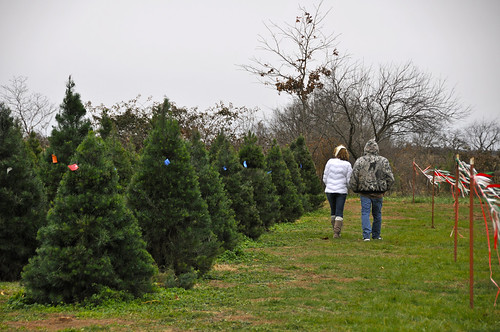Picking a Christmas tree? Gloves, measurements, eyeballs needed
By Emily Thompson
U of A System Division of Agriculture
Dec. 14, 2016
Fast facts:
- Look for straight tree trunks, soft branches and overall shape when going to pick out a Christmas tree.
- Be sure branches are strong enough to hold decorations
(350 words)
(Newsrooms: With 12-12-2016-Ark-Christmas-Trees-Business, downloadable art at www.flickr.com/photos/uacescomm/30728036453, www.flickr.com/photos/uacescomm/31165075440)
HOPE, Ark. – Gloves, measurements and a good eye are among the tools needed to select the best Christmas tree, said Jon Barry, extension forester for the University of Arkansas System Division of Agriculture.
Barry, who who conducts pine research at the Southwest Research and Extension Center, offers a few things to keep in mind to help you pick the best tree:
- Bring gloves. The needles on the trees can be sharp.
- Know the size needed. Jon Barry, extension forester at the University of Arkansas System Division of Agriculture’s Southwest Research and Extension Center, said to make sure that tree height and diameter will fit in the space the tree will be in. Measure the space before going to get a tree.
- Look for soft branches. Soft branches are a sign of a hydrated, fresh tree said Jill Babb, who owns Wonderland Tree Farm in Pea Ridge, Arkansas, with her husband, Martin Babb.
- Make sure the branches are sturdy enough to hold your decorations. Jill Babb recommends picking out what ornaments you plan to put on the tree first, then feeling the braches to see if they can bear that weight.
- Look for a straight trunk. Martin Babb said a straight tree trunk makes it easier to fit the tree in the tree stand.
- Know what you want from your tree. “Each tree brings something else to the table,” Jill Babb said. When deciding on what tree is best, it’s important to consider the benefits of each. For example, Leyland Cypress trees are hypoallergenic and drop no needles, because they have none. However, their branches are not very sturdy. Scotch Pines will drop needles, but have a stronger branch.
- Look at the over all shape. Commercially produced trees are pruned so they have the classic Christmas tree shape. Some are pruned better than others, according to Barry. “One of the problems that I often encounter when trying to buy a Christmas tree is that the pruned ends of the branches are exposed,” Barry said. “I look at the ends of the branches to see if they are leafed out enough to hide the pruned ends.”
To learn more about forestry, contact your county extension office or visit http://www.uaex.uada.edu/environment-nature/forestry/default.aspx.
Pursuant to 7 CFR § 15.3, the University of Arkansas System Division of Agriculture offers all its Extension and Research programs and services (including employment) without regard to race, color, sex, national origin, religion, age, disability, marital or veteran status, genetic information, sexual preference, pregnancy or any other legally protected status, and is an equal opportunity institution.
# # #
Media Contact: Mary Hightower
Dir. of Communication Services
U of A Division of Agriculture
Cooperative Extension Service
(501) 671-2126
mhightower@uada.edu
Related Links
